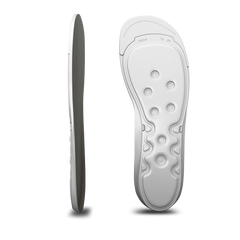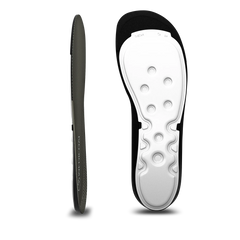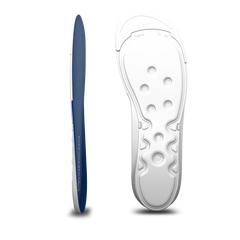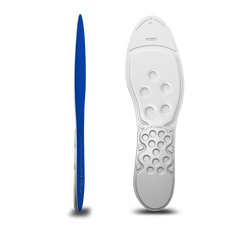The five most common causes of knee pain

1. Runner's Knee
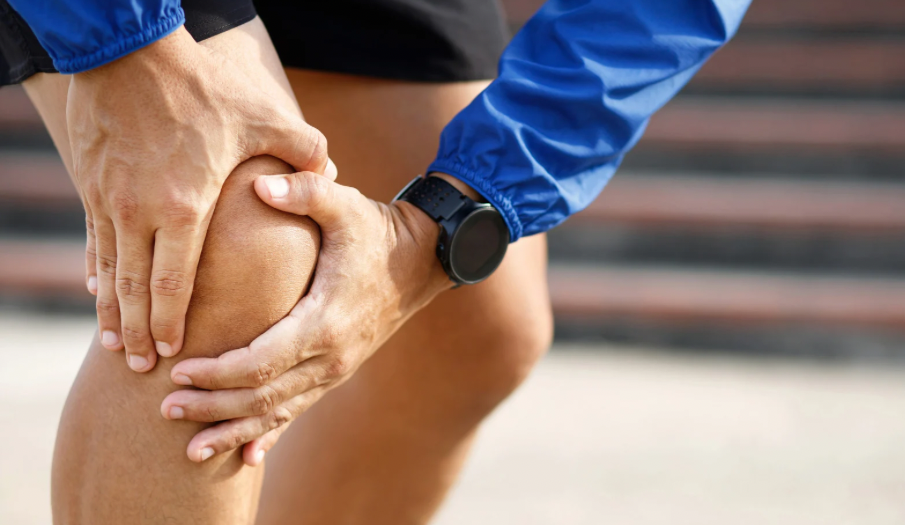
Also known as patellofemoral pain syndrome, runner’s knee is one of the most common issues that runners face. This condition is characterized by pain outside of the knee joint, around or behind the kneecap, and can be caused by a myriad of factors. Let‘s look at what runner's knee is its causes, symptoms, and treatment options.
Causes
• Overuse: Long runs or an increase in training intensity can cause excessive strain on the knee joint.
• Weakness or imbalance of muscles: Weak or unbalanced muscles around the knee and hips can cause improper alignment and increased pressure on the patellofemoral joint.
• Improper running technique: Inefficient running technique can increase stress on the knee joints.
• Incorrect footwear: Running shoes that do not provide adequate support or are worn out can cause problems with the knee joints.
Symptoms
• Pain around or behind the kneecap.
• Pain that worsens with running, walking up a set of stairs, or after long periods of sitting with bent knees.
• Possible swelling or a feeling of grinding in the knee joint.
Diagnosis
Diagnosis of runner's knee involves a medical examination and possibly imaging tests, such as an MRI and/or X-ray.
Treatment options
• Rest and ice: Reducing activity and applying ice to the affected knee can help reduce pain and swelling.
• Physical therapy: Exercises to strengthen and improve the flexibility of muscles around the knee and hips.
• Changes in the training plan: Adjusting running and training techniques to reduce strain on the knees.
• Proper footwear: Using running shoes that provide the right support and are regularly replaced.
• Medication therapy: Anti-inflammatory medications may be recommended to relieve pain and inflammation.
Prevention
• Gradually increasing training intensity.
• Maintaining a suitable body weight.
• Regular strengthening and flexibility exercises.
• Proper running technique.
• Investment in quality running shoes.
• Placing sports orthopedic inserts Medicovi Sport 100 inside running shoes.
Runner's knee is usually treatable, but it is important to follow expert recommendations and avoid excessive strain on the knee during recovery.
2. Chondromalacia Patellae
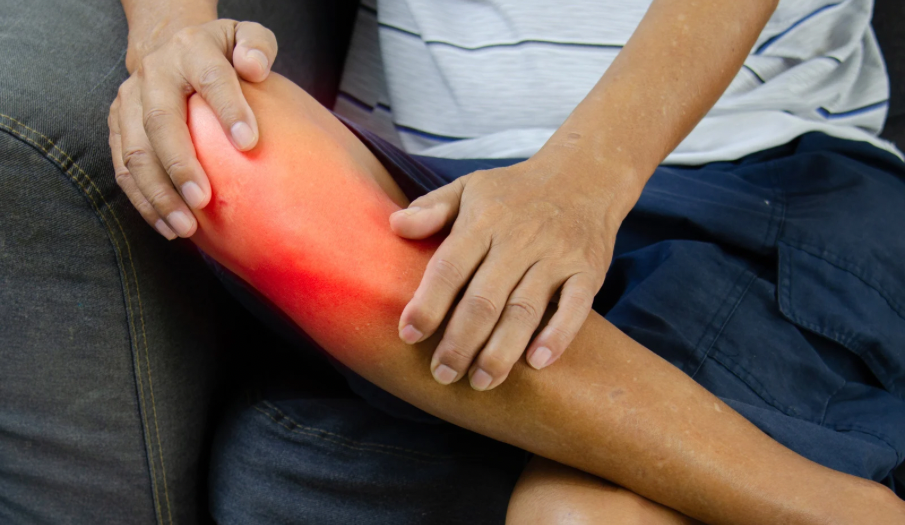
Chondromalacia patellae, also known as softening of the cartilage under the kneecap, is a condition that affects the cartilage on the underside of the knee joint. It is a relatively common condition that can cause pain and discomfort in the knee, especially during activities like walking up a set of stairs or squatting. Here is a more detailed look at this issue:
Causes and development
Chondromalacia patellae most often develops as a result of excessive strain on the knee joint, which can be caused by various factors, such as:
• Improper or excessive physical activity, such as intense sports or activities that involve repeated bending of the knee can contribute to the development of this condition.
• Anatomical irregularities: Unusual shape or position of the kneecap, weak muscles, or poor biomechanics of walking can lead to uneven pressure distribution on the cartilage.
• Injuries: Direct impacts to the knee or injuries can damage the cartilage and cause chondromalacia.
Symptoms
The main symptom of chondromalacia patellae is pain under the knee joint, which worsens during certain activities, such as:
• Walking up a set of stairs or squatting
• Long periods of sitting with bent knees
• Running or jumping
• In addition to pain, people may also experience creaking or a feeling that the knee is "locked" or "coming out of joint."
Diagnosis
The diagnosis of chondromalacia patellae is usually made based on the patient's history, physical examination, and imaging tests, such as MRI.
Treatment options
Treatment focuses mainly on relieving symptoms and restoring knee function. Common approaches include:
• Rest and limiting activities that provoke pain.
• Physical therapy to strengthen the muscles around the knee and improve its stability.
• Anti-inflammatory medications to relieve pain and inflammation.
• Changes in footwear or the use of orthopedic inserts, which can help improve knee positioning and biomechanics.
• In severe cases, surgical intervention, such as arthroscopy, may be necessary to repair or remove damaged cartilage.
Prevention
• Prevention includes maintaining a healthy body weight, performing exercises to strengthen knee and thigh muscles, and choosing appropriate footwear for sports activities.
• It is also important to avoid excessive strain on the knee, especially during activities that involve repeated bending and stretching of the knee.
Chondromalacia patellae is a condition that can significantly affect quality of life. Early diagnosis and the right approach to treatment can help restore knee function and relieve pain.
3. Baker's cyst
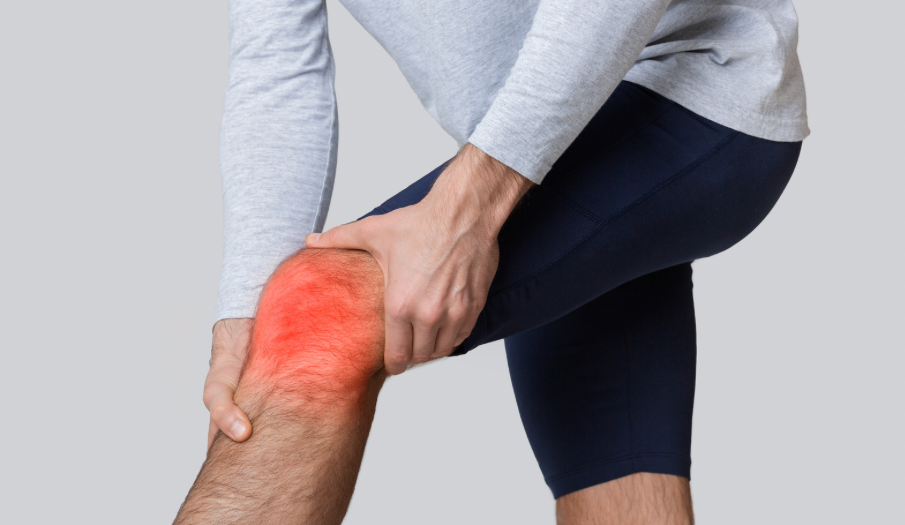
A Baker's cyst, also known as a popliteal cyst, is a relatively common condition that affects the area behind the knee. This fluid-filled cyst can cause pain and swelling in the back of the knee. Let's take a closer look at what a Baker's cyst is, its causes, symptoms, diagnosis, treatment, and prevention options.
What are Baker's cysts?
A Baker's cyst is the result of an accumulation of excess fluid in the knee joint or in the popliteal fossa (the hollow at the back of the knee). This cyst can be associated with other knee conditions, such as arthritis or meniscal injuries.
Causes
• Degenerative changes in the knee: Osteoarthritis and other degenerative diseases of the knee can lead to the production of excessive fluid.
• Inflammatory diseases: Such as rheumatoid arthritis.
• Meniscus injury or other joint structure damage.
Symptoms
• Pain or discomfort in the back of the knee.
• Swelling behind the knee, which may worsen when bending the knee or after standing for a long time.
• A feeling of fullness or pressure behind the knee. In some cases, the cyst can burst, leading to sharp pain and swelling in the lower leg.
Diagnosis
• Physical examination.
• Imaging methods such as ultrasound or MRI, which help determine the size and location of the cyst, as well as the presence of any related knee conditions.
Treatment options
Treatment of a Baker’s Cyst depends on the severity of symptoms and the cause of the cyst.
Conservative treatments
• Rest and apply ice to reduce swelling.
• Use of compressive bandages or orthoses to reduce pain and swelling.
• Physical therapy and exercises to improve range of motion and strengthen muscles around the knee.
• Anti-inflammatory medications to alleviate pain and swelling.
Invasive procedures
• Aspiration of fluid from the cyst, with the fluid being removed using a needle.
• In cases where the cyst causes significant problems or reoccurs, surgical intervention may be necessary.
Prevention
• Treatment of the underlying disease, such as arthritis or meniscal injuries.
• Regular exercises to maintain knee health and flexibility.
• Monitoring and proper response to any symptoms associated with the knees.
Although a Baker's Cyst can be painful and cause discomfort, it is usually a condition that can be effectively treated. It is important to address not only the symptoms but also the underlying cause of the cyst's formation. In case of persistent problems, it is important to consult with a healthcare professional for adequate treatment and advice.
4. Meniscus Injury
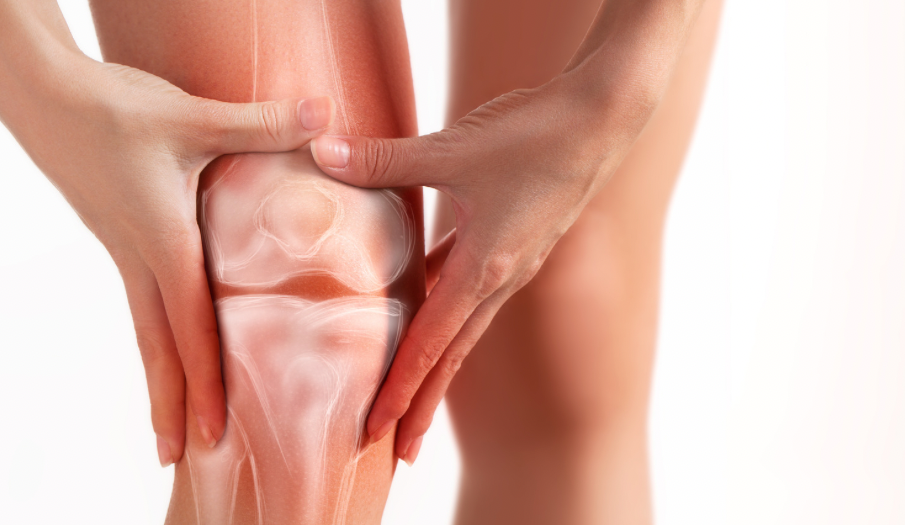
Meniscus injuries are common knee problems, especially in athletes, and can lead to knee pain and swelling. The meniscus, the soft cartilage between the femur and tibia, is key to the stability and load distribution in the knee joint. Let's take a closer look at what meniscus injuries mean, their causes, symptoms, treatment options, and prevention.
What are meniscus injuries?
The meniscus performs two main functions in the knee joint: it helps distribute load and stabilizes the joint. Meniscus injuries can be acute, usually caused by a direct trauma, or chronic, arising from long-term strain and wear.
Causes
• Meniscus injuries are often the result of sports activities, especially those involving sharp changes in direction, jumping, or impact movements. These injuries are common in sports like football, basketball, skiing, and volleyball.
• In addition, degenerative changes associated with aging can also be a risk factor.
Symptoms
• Pain in the knee, especially when bending or twisting.
• Swelling or stiffness in the knee.
• A feeling that the knee "locks" or cannot be fully bent or straightened.
• A sensation of "clicking" or "locking" in the knee during movement.
Diagnosis
The diagnosis of a meniscus injury includes physical examination, medical history, and often imaging techniques like MRI or X-ray. MRI is particularly useful because it provides a detailed image of the soft tissues of the knee.
Treatment options
Treatment depends on the extent and location of the injury.
Conservative treatments:
• Rest and applying ice to reduce swelling.
• Compression and elevation of the affected limb.
• Physical therapy to improve the range of motion and strengthen the muscles around the knee.
• Anti-inflammatory medications to alleviate pain and swelling.
Surgical treatment:
Arthroscopic surgery is often the preferred method for more serious injuries. This minimally invasive surgery allows the doctor to examine and repair the damaged meniscus.
Prevention
• Adequate warm-up before physical activity.
• Strengthening and improving the flexibility of leg muscles, especially the quadriceps and hamstrings.
• Using the correct technique during sports activities.
• Wearing appropriate sports footwear.
• Using Medicovi Sport 100 orthopedic inserts inside shoes.
Meniscus injuries can be painful and limiting, but with proper treatment and rehabilitation, patients can often fully recover. Prevention is also important, especially for active athletes, to minimize the risk of these injuries.
5. Injury of the Anterior Cruciate Ligament

Injury of the anterior cruciate ligament, also known as an ACL injury, is one of the most severe and common types of knee injuries, primarily affecting athletes. The ACL is a key stabilizer of the knee joint, and its injury can lead to severe pain, swelling, and long-term instability. Let's take a closer look at what ACL injuries mean, their causes, symptoms, diagnosis, treatment, and prevention.
What are ACL injuries?
The ACL is one of the main ligaments in the knee joint that prevents the thigh bone from sliding over the shinbone. An ACL injury may involve a partial or complete tear of this ligament.
Causes
ACL injuries are often associated with sports activities that require rapid changes in direction, jumping, and sudden stops. These types of movements are common in sports like football, basketball, skiing, and gymnastics. Additionally, women are more susceptible to these injuries than men due to anatomical and hormonal differences.
Symptoms
• Intense knee pain.
• Sudden swelling of the knee, often within a few hours after the injury.
• Loss of range of motion.
• Instability of the knee when walking or changing position.
• Diagnosis
Diagnosis
• Medical examination, testing stability, range of motion, and strength of the knee.
• Imaging tests like MRI, which provide a detailed image of the internal structures of the knee.
• X-rays to rule out fractures.
Treatment options
The treatment of ACL injuries depends on the severity of the injury and the patient's lifestyle.
Conservative treatments:
• Physical therapy to strengthen the muscles around the knee and improve its stability.
• Supportive devices such as knee braces.
• Rest and ice application to reduce swelling.
Surgical treatments:
• ACL reconstruction, which involves replacing the damaged ligament with a tendon from another part of the body or from a donor.
• Post-surgery rehabilitation, which is key to successful recovery.
Prevention
• Strengthening and stabilization exercises.
• Techniques to improve agility and coordination.
• Wearing appropriate sports footwear and orthopedic insoles Medicovi Sport 100.
• Following proper technique in sports activities.
ACL injuries can have a significant impact on an athlete's life and require thorough treatment and rehabilitation. Given the severity of these injuries, prevention is also important, especially for athletes engaged in high-risk activities. With adequate treatment and rehabilitation, patients can achieve full recovery and return to their activities.
